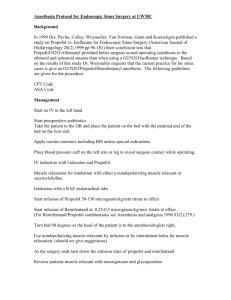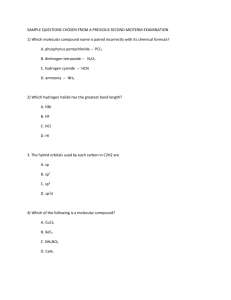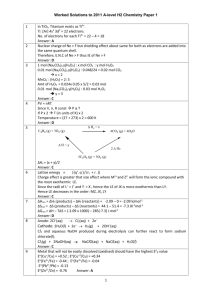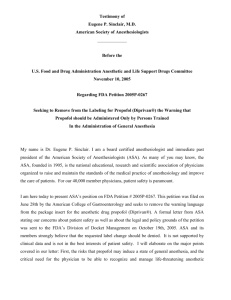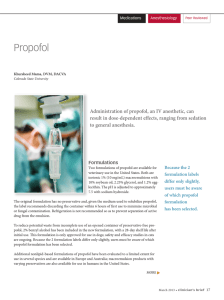Iker05-PPF1W3_Supporting Information-v6.0
advertisement
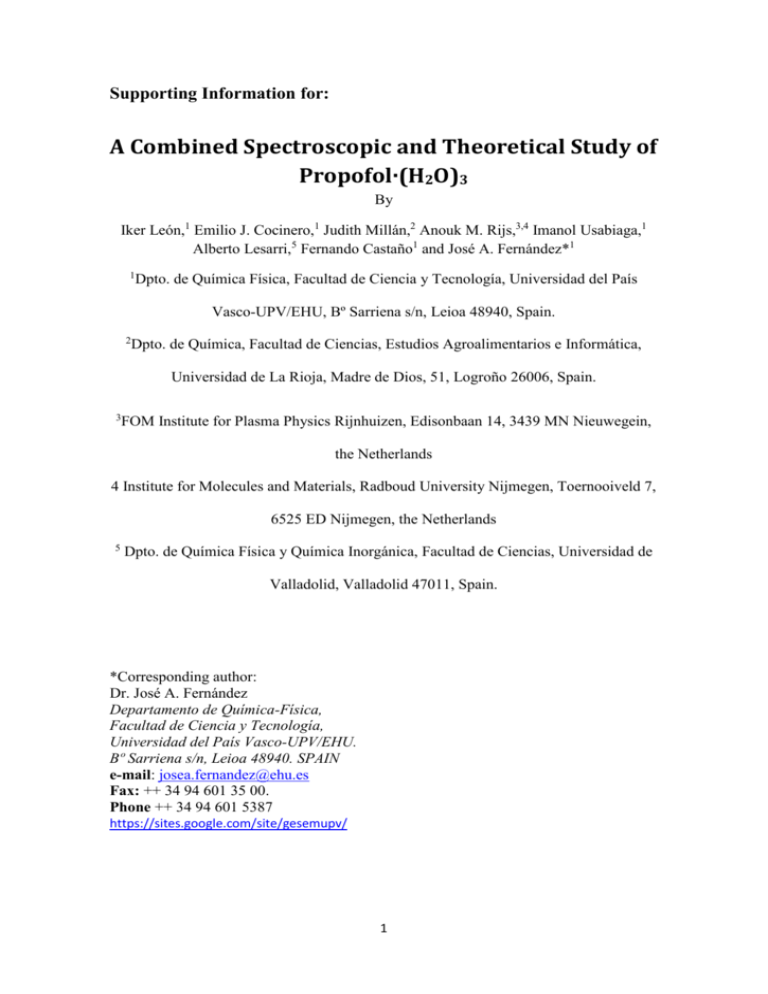
Supporting Information for: A Combined Spectroscopic and Theoretical Study of Propofol·(H2O)3 By Iker León,1 Emilio J. Cocinero,1 Judith Millán,2 Anouk M. Rijs,3,4 Imanol Usabiaga,1 Alberto Lesarri,5 Fernando Castaño1 and José A. Fernández*1 1 Dpto. de Química Física, Facultad de Ciencia y Tecnología, Universidad del País Vasco-UPV/EHU, Bº Sarriena s/n, Leioa 48940, Spain. 2 Dpto. de Química, Facultad de Ciencias, Estudios Agroalimentarios e Informática, Universidad de La Rioja, Madre de Dios, 51, Logroño 26006, Spain. 3 FOM Institute for Plasma Physics Rijnhuizen, Edisonbaan 14, 3439 MN Nieuwegein, the Netherlands 4 Institute for Molecules and Materials, Radboud University Nijmegen, Toernooiveld 7, 6525 ED Nijmegen, the Netherlands 5 Dpto. de Química Física y Química Inorgánica, Facultad de Ciencias, Universidad de Valladolid, Valladolid 47011, Spain. *Corresponding author: Dr. José A. Fernández Departamento de Química-Física, Facultad de Ciencia y Tecnología, Universidad del País Vasco-UPV/EHU. Bº Sarriena s/n, Leioa 48940. SPAIN e-mail: josea.fernandez@ehu.es Fax: ++ 34 94 601 35 00. Phone ++ 34 94 601 5387 https://sites.google.com/site/gesemupv/ 1 Figure S1. Conformations of propofol with their relative stability in kJ/mol, as calculated at the M06-2X/6-311++G(d,p) level. Carbon atoms are depicted in yellow, hydrogen atoms in blue and oxygen in red. 2 Figure S2. Conformations of propofol·(H2O)3 with their relative stability in kJ/mol, as calculated at the M062X/6-311++G(d,p) level. Carbon atoms are depicted in yellow, hydrogen atoms in blue and oxygen in red. 3 Table S1. Relative stability, dissociation energies and BSSE correction for the propofol·(H2O)3 calculated structures in Fig. S2. Structure s1 s2 s3 s4 s5 s6 s7 s8 s9 s10 s11 s12 s13 s14 s15 s16 s17 s18 s19 s20 S21 s22 s23 s24 ∆E (kJ/mol) 0.00 -0.05 0.01 2.08 4.88 4.29 4.97 4.36 3.10 6.07 6.07 5.75 7.91 9.21 10.65 12.62 12.83 12.67 16.32 16.66 16.07 17.39 18.64 18.46 ∆EZPE (kJ/mol) 0.00 1.68 2.46 3.71 4.10 5.22 5.67 6.03 6.04 6.94 6.99 7.09 8.02 10.73 11.23 11.68 12.89 13.09 13.20 14.30 15.86 16.88 17.38 18.20 4 D0 (kJ/mol) -95.19 -93.66 -93.83 -91.65 -94.87 -93.79 -93.76 -93.15 -89.31 -88.63 -88.58 -92.33 -87.44 -89.70 -85.46 -87.32 -91.61 -91.51 -82.45 -88.95 -80.42 -79.12 -86.64 -85.83 EBSSE (kJ/mol) 16.89 16.74 15.79 16.71 16.92 16.86 16.45 16.70 16.73 16.50 16.51 16.46 16.76 15.44 15.38 16.88 15.96 15.87 16.43 17.22 15.80 16.08 16.45 16.44 Figure S3. Experimental IDIRS for propofol·(H2O)3 together with the calculated frequencies for each structure. A correction factor of 0.938 has been employed. conformer 1 conformer1 conformer 2 conformer2 S13 S1 S14 S2 S15 S3 S16 S4 S17 S5 S18 S6 3100 S19 S8 S20 S9 S21 S10 S22 S11 S23 S12 3800 3500 Wavenumber / cm S7 -1 5 S24 3100 3500 Wavenumber / cm -1 3800 Figure S4. (OH) vibrations of the two assigned structures of propofol·(H2O)3. 6 Figure S5. (lower panel) Potential energy curve obtained using the calculated structure s3 as starting point and rotating the isopropyl group on the right in 30º steps, while the rest of the coordinates are relaxed. (upper panel) a more detailed scan around the global minimum was performed, rotating the same isopropyl group in 10 degrees steps. Two shallow minima separated by a very small barrier are found. Calculations performed at B3LYP/6-311++G(d,p) level. Blue lines represent a spline fit added as an eye guide. 7 Figure S6. Lower panel: Potential energy curve obtained using the calculated structure s2 as starting point and rotating propofol’s OH moiety in 30º steps, while the rest of the coordinates are relaxed. Upper panel: a similar scan, but taking structure s3 as starting point. Both curves present a common minimum at -30º. Calculations performed at B3LYP/6-311++G(d,p) level. Blue lines represent a spline fit added as an eye guide. 8 Figure S7. Reaction path connecting structures s2 and s3, from the curves calculated in figure 7. 9
